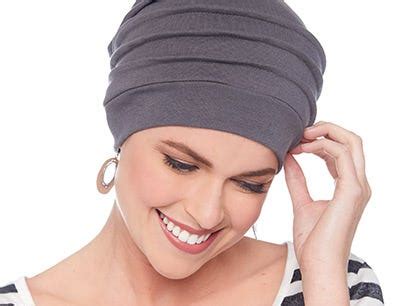Cancer treatment often involves therapies that can lead to hair loss, a side effect that can be emotionally distressing for patients. Head covers offer comfort, confidence, and a way to express individuality during this challenging time.

Why Head Covers Matter
According to the American Cancer Society, hair loss affects approximately 65% of cancer patients undergoing chemotherapy. This loss can significantly impact self-esteem and quality of life, contributing to feelings of vulnerability and self-consciousness.
Head covers provide:
- Comfort: They protect the scalp from dryness, irritation, and UV rays.
- Confidence: They conceal hair loss, allowing patients to feel more comfortable in public.
- Emotional Support: They offer a sense of control and individuality in a situation where patients may feel out of control.
Benefits of Head Covers
- Physical Protection: Protect the scalp from the elements, sun damage, and friction.
- Improved Comfort: Reduce scalp irritation, dryness, and itching.
- Emotional Support: Enhance confidence, self-esteem, and overall well-being.
- Versatility: Available in a wide range of styles, materials, and colors to match personal preferences.
- Positive Impact on Treatment Adherence: Head covers can help patients feel better about their appearance, which may lead to improved adherence to treatment regimens.
Comparing Head Covers
Various types of head covers are available, each with its benefits and drawbacks.
| Type | Pros | Cons |
|---|---|---|
| Beanies | Comfortable, versatile, and affordable | Can be constricting or too warm |
| Turbans | Stylish, comfortable, and customizable | Can be bulky or difficult to tie |
| Scarves | Breathable, lightweight, and easy to manage | Can slip or shift easily |
| Wigs | Realistic appearance, conceal hair loss completely | Expensive, require upkeep |
| Headbands | Comfortable, breathable, and adjustable | May not provide full coverage |
Tips and Tricks
- Choose comfort: Opt for head covers made from soft, breathable materials.
- Personalize it: Explore different styles, colors, and patterns to express your individuality.
- Layer for warmth: Combine multiple head covers in colder weather to stay warm.
- Experiment with different styles: Try on various head covers to find what suits you best.
- Seek guidance: Consult with a healthcare professional or cancer support group for advice.
Head Covers for Diverse Needs
Scalp Sensitivity: Sensitive scalp can benefit from head covers made from hypoallergenic and gentle materials like bamboo or silk.
Hair Growth Stages: During the regrowth phase, head covers with adjustable straps or breathable fabrics can accommodate changing scalp sizes.
Cultural and Religious Considerations: Head covers designed for specific cultural or religious needs are readily available, such as hijabs and prayer hats.
Post-Mastectomy: Post-mastectomy head covers provide support, compression, and comfort to the affected area.
Innovative Applications
Cooling Head Covers: Head covers with built-in cooling systems can help regulate body temperature during treatment.
Therapeutic Head Covers: Incorporating aromatherapy or weighted features into head covers has shown potential to reduce stress and enhance relaxation.
Interactive Head Covers: Advanced technologies allow head covers to monitor scalp health, provide personalized feedback, or connect patients with support groups.
Conclusion
Head covers for cancer patients are not just accessories; they are a symbol of hope, comfort, and individuality. They offer physical protection, emotional support, and the opportunity for self-expression. By embracing head covers, cancer patients can take ownership of their appearance and enhance their overall well-being during and beyond treatment.
